Top speed 220 km/h Length 6 m Manufacturer Bücker Flugzeugbau | Wingspan 6.6 m Engine type Reciprocating engine Designer Carl Bücker | |
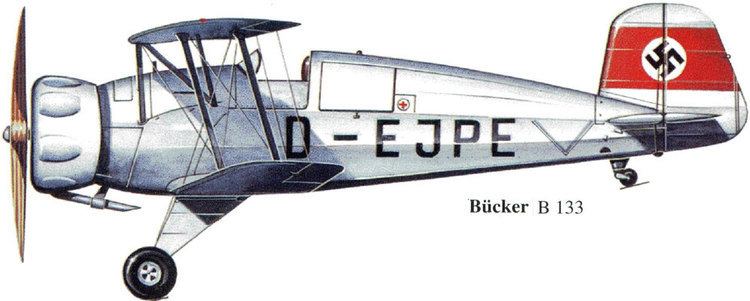 | ||
The Bücker Bü 133 Jungmeister (Young master) was an advanced trainer of the Luftwaffe in the 1930s. It was a single-engine, single-seat biplane of wood and tubular steel construction and covered in fabric.
Contents
- B cker b 133 jungmeister
- Development
- Operational history
- Variants
- Operators
- Specifications Bcker B 133C
- References
B cker b 133 jungmeister
Development
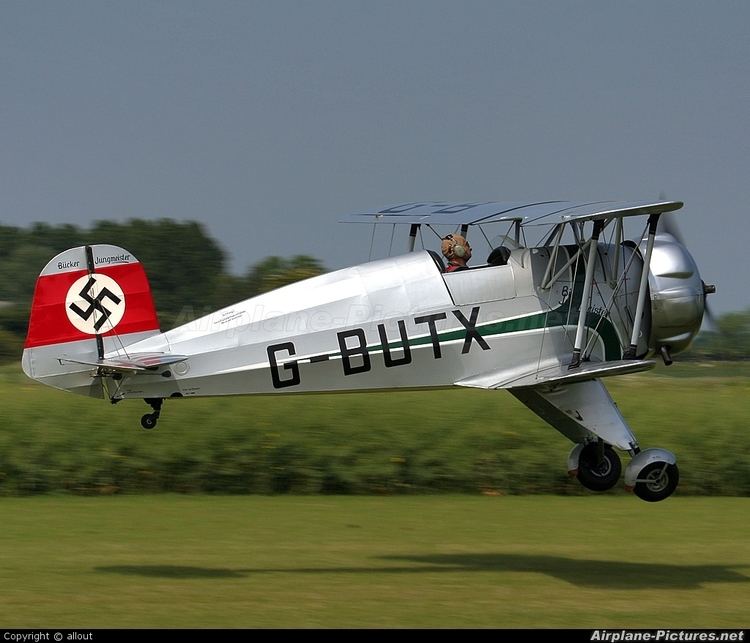
The Bü 133 was a development of the Bücker Bü 131 Jungmann two-seat basic trainer. First flown in 1935 (by Luise Hoffmann, the first female works pilot in Germany), it was slightly smaller than the Bü 131. The prototype, D-EVEO, was powered by a 140 hp (104 kW) Hirth HM506 inverted, air-cooled inline-6 engine.
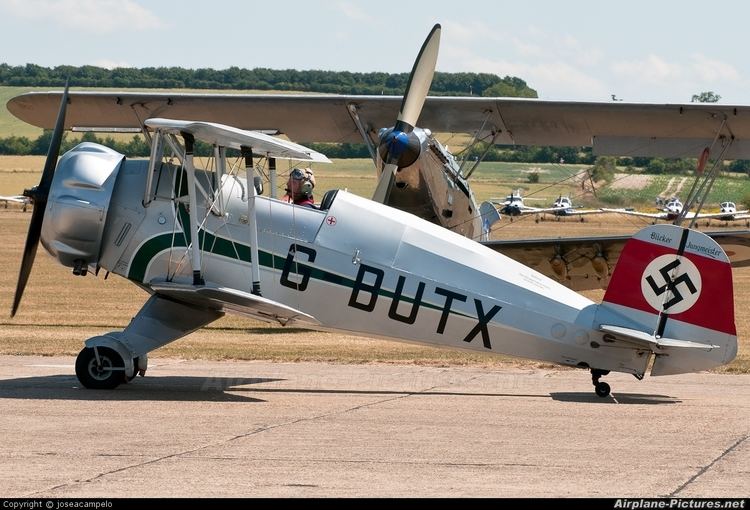
The aircraft showed "astonishing agility" at its first public appearance, the 1936 International Aerobatic Championship at Rangsdorf, but the Bü 133A garnered no orders; only two Bü 133Bs, with 160 hp (119 kW) version of that same Hirth HM506 inline-6 engine, were built.
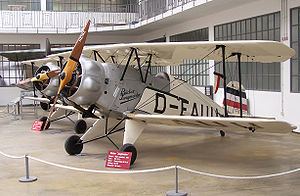
The main production type was the 160 hp (119 kW) Siemens-Bramo Sh 14A radial powered Bü 133C, which had a distinctive cowling and a 13 cm (5.1 in)-shorter fuselage, and the same fine aerobatic performance as the Bü 133A.
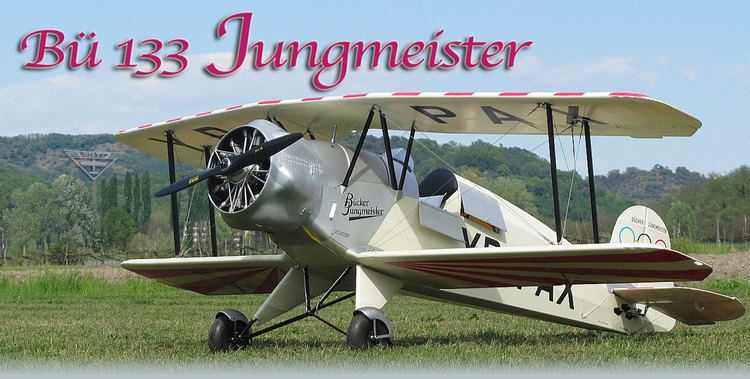
Fifty-two were manufactured under licence by Dornier for the Swiss Air Force (which kept it in service until 1968),. A similar number were built for the Spanish air force by CASA, and were designated the CASA 1-133.
Operational history

The Bü 133C racked up numerous victories in international aerobatic competition, and by 1938 was the Luftwaffe's standard advanced trainer. At the Brussels meet that year, a three-man Luftwaffe team made a strong impression on Reichsmarschall Hermann Göring, who ordered a nine-man team be formed. It dazzled the crowds at the International Flying meet in Brussels the next year.
The Jungmeister design remained competitive in international aerobatic competition into the 1960s.
Variants
Operators
Specifications (Bücker Bü 133C)
Data from The Concise Guide to Axis Aircraft of World War II - David Mondey
General characteristics
Performance
